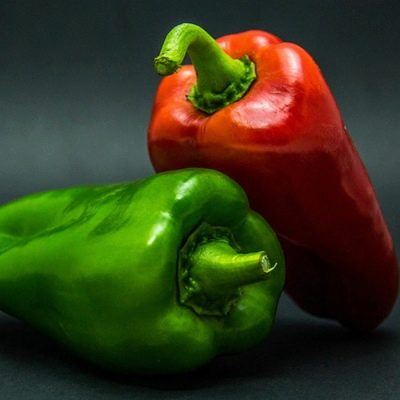
- Authors: Kurdyukov V.T., Kurdyukov A.V.
- Year of approval: 1993
- Bush height, cm: 55-65
- Growth type: medium-sized
- Fruit shape: truncated-conical and prismatic
- Fruit weight, g: 69-160
- Fruit color: light green in technical ripeness, red in biological ripeness
- Ripening terms: mid-season
- Ripening month: July August September
- Fruit size, cm: length 12-15
Pepper Korenovsky belongs to the author's varieties of domestic selection. It has been known for more than a quarter of a century, farmers from different countries speak well of it. Despite the huge number of new products and more advanced varieties and hybrids, Korenovsky has not lost its relevance today.
Breeding history
Vladimir Tikhonovich Kurdyukov from Korenovsky District of Krasnodar Territory, an amateur breeder, is the creator of not only this famous Bulgarian variety, named after his homeland, but also many pepper varieties and other garden and vegetable garden crops. The enthusiast completed work on this variety in the early 1990s, and already in 1993 the culture was allowed to be used in the North Caucasus region.
Description of the variety
The Korenovsky variety is not a hybrid, and this is its value. And also in high productivity in any weather, long-term fruiting, excellent taste of fruits. The culture can be used for commercial cultivation. They plant it in a greenhouse, in open ground, in spring greenhouse shelters. Growing Korenovsky is quite easy due to the unpretentiousness of the culture.
Characteristics of the appearance of plants and fruits
The bush of Korenovsky pepper is semi-sprawling, low, grows to a maximum of 55-65 cm. The leaves on the plant are dark green in color, the leaf plates are large.
The shape of the fruit is truncated-conical, prismatic, large pepper. The surface is slightly wavy, ribbed. Gardeners love this variety for its beauty, excellent appearance with rich red skin in biological ripeness, while in technical ripeness the fruits are still light green. The walls of the peppers are 4.6-4.7 mm, the weight of the fruits varies within 69-160 grams.
Purpose and taste
The palatability of the fleshy, sweet peppers is remarkable. It is recommended for fresh consumption, aromatic fruits can perfectly complement and decorate any salad. This product is also good for cooking various home cooking dishes, as well as for preparing, canning, freezing.
Ripening terms
Korenovsky pepper is considered mid-season. The time interval between shoots and fruiting is 107-113 days. Fruits ripen from July, fruiting continues in August and September.
Yield
The culture is classified as high-yielding. Average yield 1.9-4.2 kg / sq. m.
Growing regions
Korenovsky is zoned in the North Caucasian region. Therefore, it can often be seen in the Krasnodar and Stavropol Territories, in the Rostov Region, the Republic of Crimea, as well as in the gardens of Adygea, North Ossetia, Chechnya, Dagestan and Ingushetia, other regions and republics of the North Caucasus.

To get a large and tasty harvest of pepper, you need to take care of the seedlings in advance. When growing pepper seedlings, you need to correctly determine the sowing time, pre-sowing seed treatment, prepare the necessary container and soil.
Growing and caring
Korenovsky has been cultivated for more than 25 years using the seedling method. The culture will give a bountiful and high-quality harvest if simple rules are followed:
- seeds are sown to a centimeter depth;
- after the appearance of two or three leaves, the seedlings dive in separate containers;
- the grown seedlings of pepper are transplanted to the garden bed after 60-65 days after sowing;
- by the time of disembarkation, the soil should warm up to a temperature of +20 degrees;
- Korenovsky bushes are fertilized 3 times or more during the growing season;
- the temperature of the liquid with which the peppers are poured should be at around 21 degrees or higher;
- fruiting will be more abundant if crown buds are removed.

To harvest a tasty and rich harvest of pepper, you need to comply with all the conditions of agricultural technology, and proper care begins with planting plants. Before planting pepper in open ground, it should be prepared. It is also important to take care of the seedlings and planting space in advance.




For good growth of pepper bushes and active fruiting, you need to regularly apply mineral and organic fertilizing to the soil. It is necessary not only to choose the right formulations, but also to use them at the right stage in the development of culture. The frequency of top dressing is always individual. It depends directly on the composition of the land on your site. The poorer the soil composition, the more often you will need to feed the pepper.
Disease and pest resistance
Pepper Korenovsky is no longer a novelty, many gardeners know and love it. The variety does not have a particularly strong protection against some ailments, it is susceptible to verticillary wilt. However, the variety will consistently bear fruit if you follow all the standard care rules.

Pepper is one of the most common vegetables in home gardens. This culture is quite stable and unpretentious. However, under certain conditions, this plant can suffer from infections and harmful insects. Before treating peppers for diseases or pests, you need to find out the cause of the problem, otherwise the treatment may be ineffective.





















































































